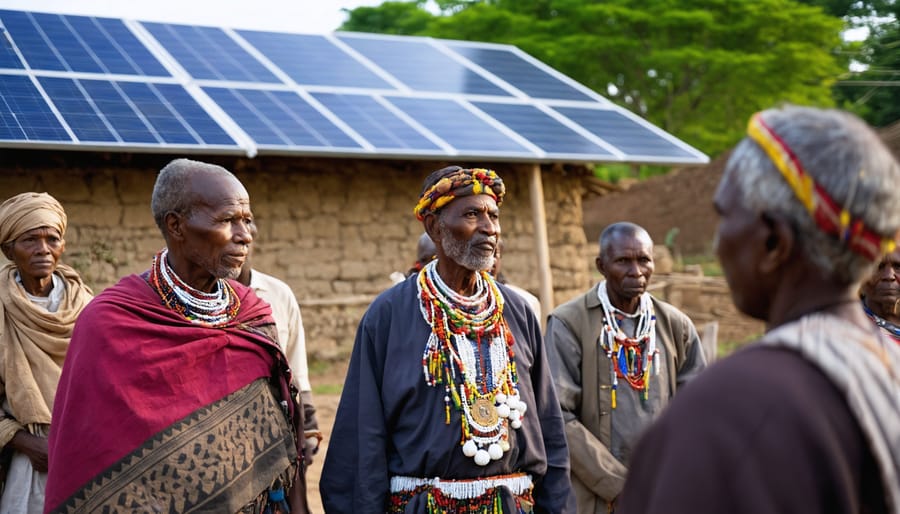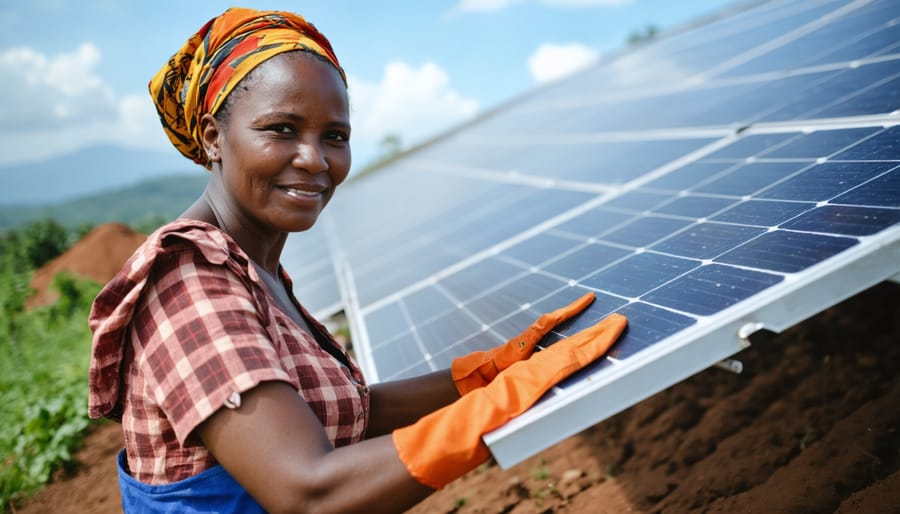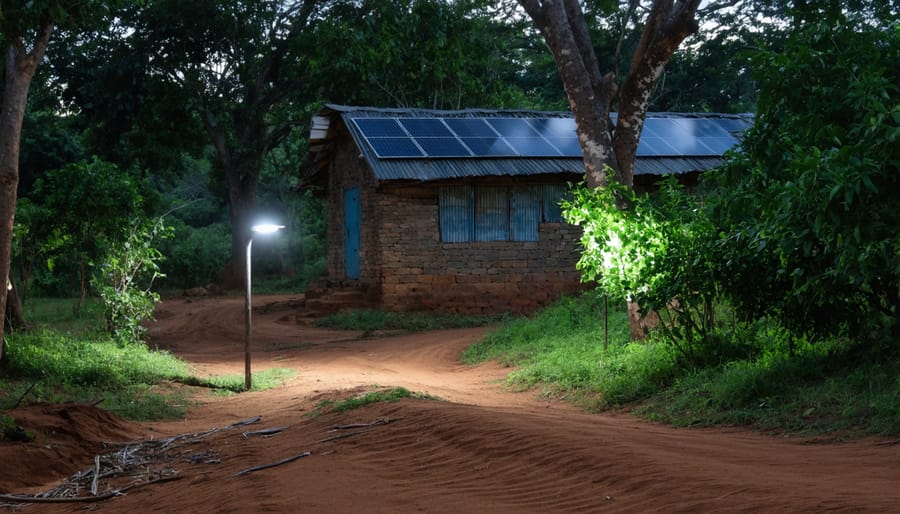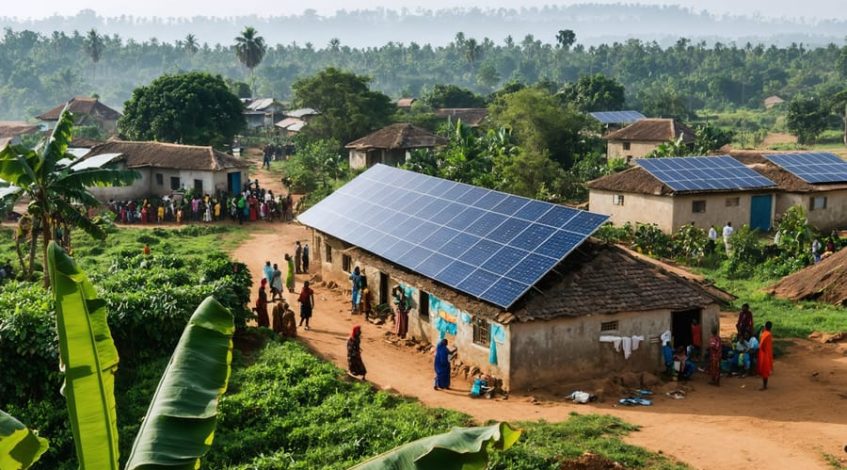Tanzania’s off-grid electric revolution stands as a transformative model for sustainable energy development in sub-Saharan Africa. With over 70% of rural communities lacking reliable electricity access, innovative private-sector solutions are reshaping the nation’s energy landscape. Companies like M-POWER and Off-Grid Electric have pioneered pay-as-you-go solar systems, enabling over 2 million Tanzanians to access clean, affordable electricity for the first time.
These market-driven initiatives demonstrate how cultural sensitivity, technological innovation, and flexible payment models can overcome traditional barriers to rural electrification. By leveraging mobile payment infrastructure and establishing local distribution networks, off-grid solutions have achieved remarkable penetration rates in previously underserved regions. The success of these programs has attracted significant international investment, with the World Bank and private equity firms committing over $200 million to scale operations.
For project developers and energy consultants, Tanzania’s experience offers valuable insights into successful implementation strategies. The combination of community engagement, appropriate technology selection, and sustainable business models has created a replicable framework for off-grid electrification across developing markets. This approach not only addresses immediate energy needs but also catalyzes economic development through improved education, healthcare, and entrepreneurial opportunities.
Tanzania’s Unique Cultural Landscape
Community Decision-Making Structures
In Tanzania’s rural electrification landscape, traditional leadership structures play a pivotal role in project implementation and community acceptance. Village elders and local councils, known as “Village Executive Officers” (VEOs), serve as primary decision-makers and gatekeepers for off-grid energy initiatives. These leaders facilitate community consultations through established mechanisms, including village assemblies and council meetings.
The consultation process typically involves three key phases: initial awareness meetings, stakeholder engagement sessions, and final implementation planning. Community members participate in decision-making through representative committees that work alongside Off-Grid Electric Tanzania’s field teams. These committees, comprising both men and women, ensure balanced representation and help address gender-specific energy needs.
Success rates significantly improve when projects align with existing community governance structures. For example, villages that incorporate traditional leadership into their energy committees show 40% higher adoption rates and better payment compliance. Regular feedback sessions between community representatives and project managers enable swift problem resolution and ensure long-term sustainability of installations. This collaborative approach has become a model for similar initiatives across East Africa.

Rural vs Urban Cultural Dynamics
The adoption of off-grid electric solutions in Tanzania reveals distinct patterns between rural and urban populations. Rural communities typically approach energy adoption through collective decision-making processes, often influenced by traditional leadership structures and community-based organizations. These areas prioritize basic lighting and mobile phone charging capabilities, with adoption rates closely tied to agricultural seasons and income patterns.
In contrast, urban populations demonstrate more individualistic decision-making patterns, focusing on broader energy applications for small businesses and household appliances. Urban adopters generally show higher technical literacy and demand more sophisticated energy solutions, often seeking systems that can support entertainment devices and commercial equipment.
Research indicates that successful implementation strategies must account for these differences. Rural areas benefit from community-centered deployment models that incorporate local leaders and establish communal charging stations. Urban installations are more effective when marketed as individual household solutions with emphasis on business applications and economic benefits.
Understanding these cultural dynamics has enabled off-grid electric providers to develop targeted approaches, resulting in higher adoption rates and more sustainable long-term usage patterns across both demographics.
Cultural Barriers and Opportunities
Gender Roles and Energy Access
Gender dynamics play a crucial role in the success of off-grid electrification projects in Tanzania, particularly in relation to sustainable community development. Research shows that women are often the primary energy managers in Tanzanian households, making decisions about fuel purchases, appliance usage, and energy conservation.
In rural Tanzania, women traditionally spend significant time collecting firewood and managing household energy needs. Off-grid electric solutions have demonstrated particular benefits for women-led households, including improved indoor air quality, extended productive hours, and enhanced educational opportunities for children. Data indicates that when women are involved in energy planning and implementation, adoption rates increase by up to 25%.
Off-Grid Electric Tanzania has recognized these dynamics by implementing gender-sensitive approaches in their business model. These include:
– Training female solar entrepreneurs
– Developing payment plans that accommodate women’s economic patterns
– Designing marketing strategies that address women’s specific energy needs
– Creating technical support systems accessible to female customers
The company’s success in rural electrification can be partially attributed to their understanding of gender-specific energy requirements and usage patterns. This approach has not only improved project outcomes but has also contributed to women’s economic empowerment through business opportunities in the solar energy sector.

Traditional Energy Practices
In Tanzania’s rural communities, traditional energy practices have been deeply woven into the social and economic fabric for generations. Kerosene lamps, known locally as “koroboi,” remain a primary source of lighting, while charcoal and wood fuel serve as the predominant cooking energy sources for approximately 90% of households. These traditional methods, while culturally significant, pose considerable challenges to both health and environmental sustainability.
The practice of communal wood gathering has historically served as a social activity, particularly among women and children, fostering community bonds while fulfilling essential energy needs. Local markets feature established networks of charcoal and kerosene vendors who play vital roles in community commerce and social structures.
However, these traditional practices come at a significant cost. The average rural household spends 15-20% of its monthly income on kerosene and battery-powered devices. The time investment is equally substantial, with families dedicating up to 20 hours per week to fuel collection activities.
Traditional energy customs also reflect deeper cultural values around resource management and community collaboration. Many communities maintain specific protocols for forest resource usage and seasonal fuel collection patterns. These practices often align with agricultural cycles and local festivals, demonstrating the interconnected nature of energy use with broader cultural activities.
Understanding these established energy practices and their cultural significance has proven crucial for organizations implementing off-grid solutions, as successful adoption often depends on respecting and integrating existing community dynamics.
Successful Cultural Integration Strategies
Community Engagement Models
Off-Grid Electric Tanzania has developed highly effective community engagement models that prioritize local participation and sustainable development. By working closely with off-grid communities, the organization implements a three-tier engagement approach that has proven successful across various regions.
The first tier involves community leadership councils, where local leaders and influential community members participate in project planning and decision-making processes. These councils help identify specific energy needs, cultural considerations, and potential challenges before implementation begins.
The second tier focuses on skills development and capacity building. Local residents receive technical training in solar system installation, maintenance, and basic troubleshooting. This approach not only creates employment opportunities but also ensures long-term system sustainability through local expertise.
The third tier encompasses community education and awareness programs. Regular workshops and demonstrations help residents understand system capabilities, payment structures, and energy conservation practices. This comprehensive understanding leads to higher adoption rates and more effective system utilization.
Key success metrics from this engagement model include:
– 85% community participation in planning phases
– Creation of sustainable local employment opportunities
– Reduced system maintenance response times
– Improved payment collection rates
– Enhanced community ownership of energy infrastructure
The model’s effectiveness is demonstrated through consistent positive feedback from stakeholders and increasing demand for expansion into neighboring communities. This approach has become a blueprint for similar initiatives across East Africa, proving that community involvement is crucial for successful rural electrification projects.

Local Partnership Approaches
Off-Grid Electric Tanzania’s success largely stems from its strategic partnerships with local stakeholders, creating a sustainable ecosystem for rural electrification. The company collaborates with village leaders, community organizations, and regional governments to ensure smooth implementation and long-term project viability.
A key component of their approach involves engaging traditional village councils early in the planning phase. These councils help identify suitable households for solar installations and facilitate community buy-in. Local partnerships also extend to vocational schools and technical institutions, where electrification training programs prepare residents for installation and maintenance roles.
The organization has established relationships with microfinance institutions and savings cooperatives to make solar solutions more accessible. These partnerships enable flexible payment plans and provide financial literacy education to households. Additionally, collaborations with local entrepreneurs create distribution networks and after-sales service points, ensuring system reliability and customer satisfaction.
Community engagement specialists work alongside women’s groups and youth associations to promote renewable energy adoption. This grassroots approach has proven particularly effective in remote regions where traditional marketing channels are limited. The company also partners with agricultural cooperatives, helping farmers integrate solar solutions into their operations.
Through these strategic alliances, Off-Grid Electric Tanzania has created a self-sustaining ecosystem that supports both economic development and environmental sustainability. Their partnership model has become a blueprint for successful rural electrification initiatives across East Africa.
Measuring Cultural Impact
Social Impact Metrics
The success of Off-Grid Electric Tanzania’s initiatives is measured through comprehensive social impact metrics that provide valuable insights into community acceptance and sustainable development outcomes. Key performance indicators focus on both quantitative and qualitative measures essential for measuring solar adoption success across rural communities.
Primary metrics include household connection rates, which have shown consistent growth of 15-20% annually in participating regions. Customer satisfaction surveys reveal an 85% positive response rate, with particularly high scores for system reliability and payment flexibility. The program tracks economic empowerment through metrics such as extended business hours (average increase of 3.5 hours daily) and new micro-enterprise creation (estimated 2,000+ businesses launched since program inception).
Educational impact is measured through studying hours after dark, with participating households reporting a 40% increase in children’s study time. Health indicators show reduced indoor air pollution exposure by 70% as families transition from kerosene to solar lighting. Community engagement metrics track local employment generation, with over 800 trained solar technicians and sales representatives from target communities.
Financial inclusion metrics demonstrate that 60% of customers have established their first formal banking relationship through the program’s mobile payment system, contributing to broader economic development goals. These comprehensive metrics help stakeholders evaluate program effectiveness and guide strategic improvements.
Long-term Sustainability Indicators
To evaluate the long-term sustainability of Off-Grid Electric Tanzania’s initiatives, several key performance indicators have been established and monitored consistently. These metrics focus on both quantitative and qualitative aspects of cultural integration and community adoption.
Customer retention rates serve as a primary indicator, with successful projects maintaining above 85% retention over three years. Payment compliance metrics track the consistency of user payments, indicating community buy-in and service value perception. Current data shows a 92% on-time payment rate across established service areas.
Community engagement levels are measured through regular surveys and participation rates in local energy committees. These committees, comprising local representatives, maintain direct communication channels between users and service providers. Active participation rates exceeding 70% indicate strong cultural integration.
Technology adoption curves are monitored through usage patterns and system optimization requests. Data shows that households typically achieve optimal usage patterns within six months of installation, suggesting effective cultural adaptation to the technology.
Economic impact indicators track local job creation, with each service center generating an average of 15-20 permanent positions. Additionally, micro-enterprise development linked to electricity access is monitored, showing a 40% increase in small business activities within electrified areas.
Environmental sustainability metrics include carbon offset measurements and electronic waste management efficiency. The program currently achieves a 95% components recycling rate while maintaining strict environmental standards aligned with local cultural values.
The success of off-grid electrical solutions in Tanzania demonstrates the critical importance of integrating cultural considerations into renewable energy projects. Through careful attention to local customs, community engagement, and traditional decision-making structures, off-grid initiatives have achieved significantly higher adoption rates and long-term sustainability compared to projects that overlooked these cultural factors.
Looking ahead, the lessons learned from Tanzania’s experience offer valuable insights for future off-grid implementations across Africa and beyond. The establishment of community-led maintenance programs, culturally sensitive payment systems, and locally appropriate training modules has created a replicable framework for sustainable energy access. These approaches have proven particularly effective in rural areas where traditional social structures remain strong.
Key success factors include the adaptation of technology interfaces to local languages, respect for existing community leadership hierarchies, and consideration of seasonal cultural practices in system design and maintenance schedules. Project developers and stakeholders must continue to prioritize these cultural elements alongside technical and financial considerations to ensure long-term project viability.
As off-grid solutions continue to expand across Tanzania and similar markets, the integration of cultural awareness into project planning will become increasingly crucial. Future initiatives should focus on developing standardized cultural assessment tools, establishing cultural advisory boards, and implementing feedback mechanisms that capture community perspectives throughout the project lifecycle. This holistic approach will help ensure that off-grid electrical solutions not only provide power but also respect and strengthen the cultural fabric of the communities they serve.

